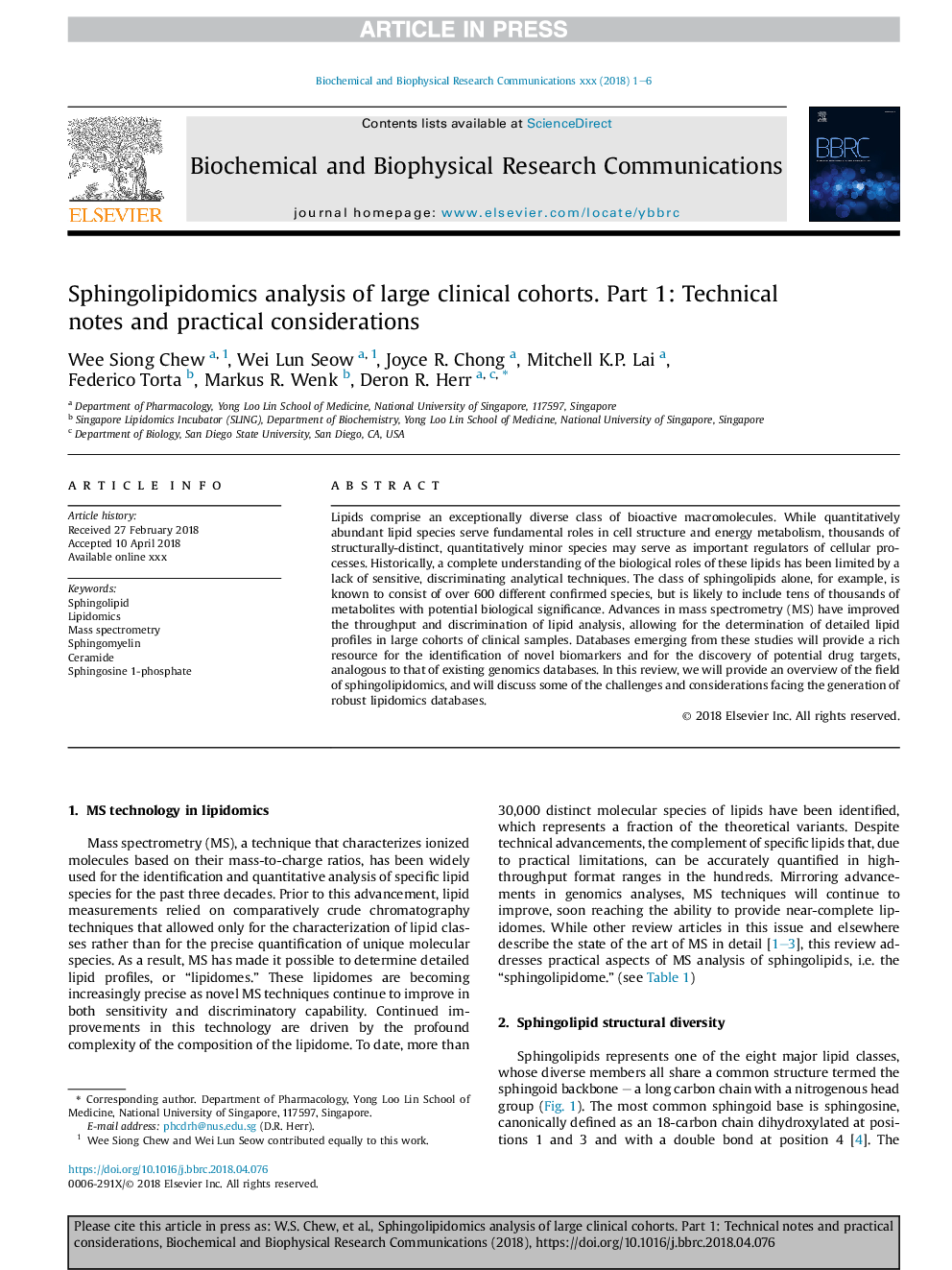| Article ID | Journal | Published Year | Pages | File Type |
|---|---|---|---|---|
| 11010999 | Biochemical and Biophysical Research Communications | 2018 | 6 Pages |
Abstract
Lipids comprise an exceptionally diverse class of bioactive macromolecules. While quantitatively abundant lipid species serve fundamental roles in cell structure and energy metabolism, thousands of structurally-distinct, quantitatively minor species may serve as important regulators of cellular processes. Historically, a complete understanding of the biological roles of these lipids has been limited by a lack of sensitive, discriminating analytical techniques. The class of sphingolipids alone, for example, is known to consist of over 600 different confirmed species, but is likely to include tens of thousands of metabolites with potential biological significance. Advances in mass spectrometry (MS) have improved the throughput and discrimination of lipid analysis, allowing for the determination of detailed lipid profiles in large cohorts of clinical samples. Databases emerging from these studies will provide a rich resource for the identification of novel biomarkers and for the discovery of potential drug targets, analogous to that of existing genomics databases. In this review, we will provide an overview of the field of sphingolipidomics, and will discuss some of the challenges and considerations facing the generation of robust lipidomics databases.
Related Topics
Life Sciences
Biochemistry, Genetics and Molecular Biology
Biochemistry
Authors
Wee Siong Chew, Wei Lun Seow, Joyce R. Chong, Mitchell K.P. Lai, Federico Torta, Markus R. Wenk, Deron R. Herr,
